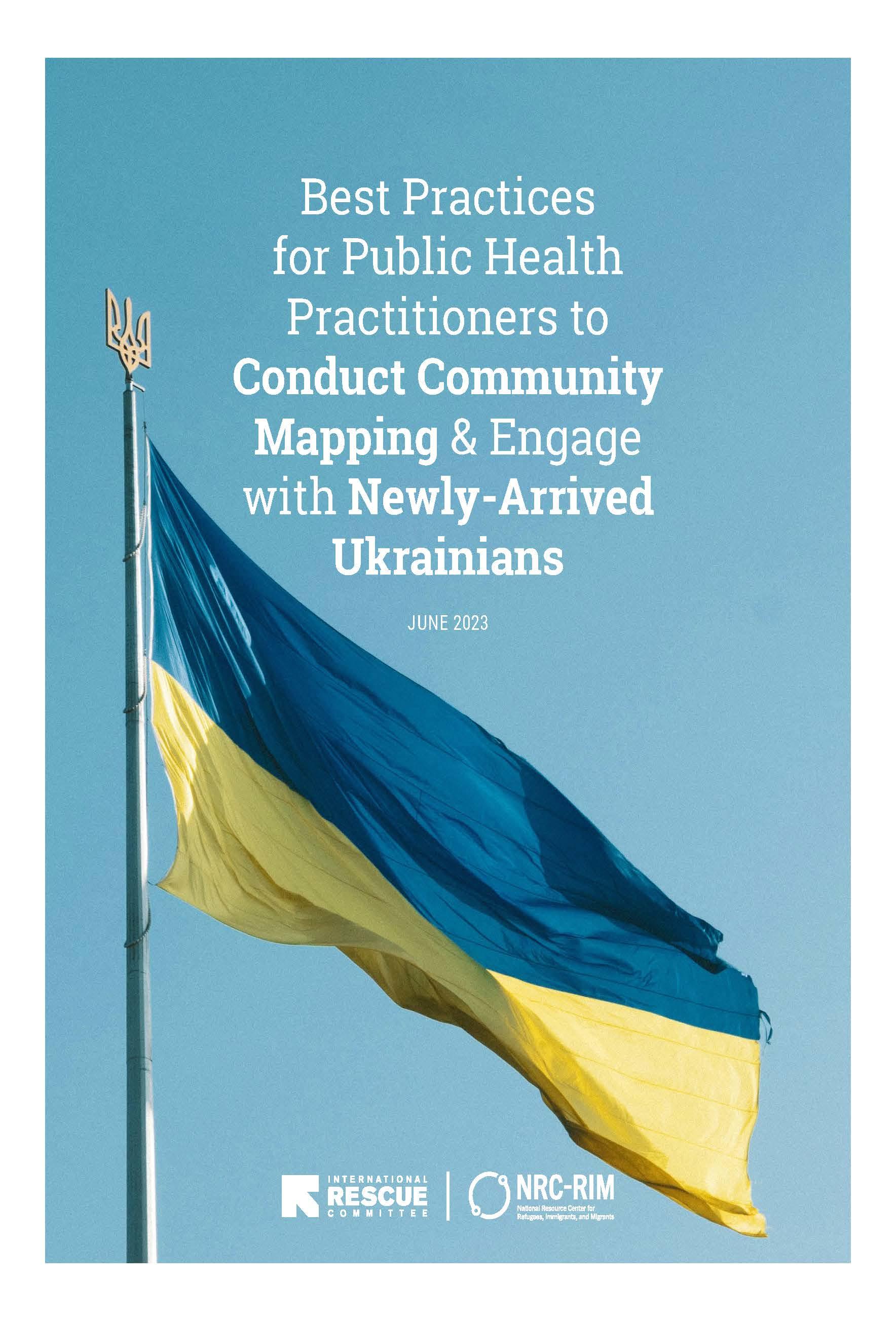This page, developed by the International Rescue Committee (IRC) and the NRC-RIM, aims to provide guidance, recommendations, and resources for public health professionals and others working with Ukrainian new arrival communities. The Ukrainian diaspora in the United States is diverse, including immigrants, refugees, asylum seekers, and humanitarian parolees. Historically, Ukrainians have arrived to the U.S. for various reasons. More recently, Ukrainians are arriving to escape the current conflict in Ukraine.
With President Joe Biden's pledge to welcome up to 100,000 Ukrainians through legal pathways, it is crucial for public health professionals to understand their health needs and ensure access to appropriate healthcare services while respecting cultural and social values. This webpage emphasizes the importance of building trust and relationships with the Ukrainian community by collaborating with community-based organizations and utilizing various outreach channels. It aims to inspire a compassionate, culturally sensitive, and effective approach to addressing the health needs of Ukrainian new arrival communities. While this is a high-level summary, more comprehensive information can be found in the detailed version of this document which includes a glossary of terms to help you navigate the content and enhance your understanding.
Understanding the immigration status and pathways of Ukrainian new arrivals is important for public health professionals to inform their interventions and address access barriers to healthcare and benefits. Below are common pathways and immigration status or types.
- Uniting for Ukraine (U4U): Provides a two-year humanitarian parole pathway for Ukrainian citizens and their immediate family members, with financial support from a U.S. sponsor. It is not a permanent form of protection or a pathway to lawful permanent residency.
- Humanitarian Parole: Allows individuals to request entry into the U.S. for urgent humanitarian reasons or significant public benefit. It is not a permanent form of protection or a pathway to lawful permanent residency.
- U.S. Refugee Admissions Program (USRAP): Provides eligible Ukrainians outside the U.S. with access to refugee resettlement processing under the Lautenberg Program, expanding options for permanent resettlement.
- Temporary Protected Status (TPS): Allows eligible Ukrainians already present in the U.S. to temporarily stay, but it does not lead to lawful permanent resident status or any other immigration status.
- Immigrant visas: Ukrainians can also immigrate based on family ties, employment, and other visa types.
Ukrainian new arrivals in the U.S. face challenges accessing health care due to language and cultural barriers, as well as trauma related to conflict or displacement. However, the Ukrainian community has strengths, including a rich cultural heritage and strong community support, which can be harnessed to address their health needs.
Common health needs among Ukrainian newcomers include mental health support, chronic disease management, and reproductive health services.
The Center of Excellence in Newcomer Health provides a brief on common health conditions and concerns, and common causes of death among Ukrainians. It also provides information on risk factors for death and disability.
Review Existing Data Sources
Utilize data from sources like the U.S. Census and local public health data to understand the demographics and characteristics of the Ukrainian community. It is recommended to seek the most recent data available and complement it with more specific and up-to-date information from local sources or community assessments.
Identify Existing Resources and Supports
Identify organizations and institutions that already support Ukrainian newcomers, such as resettlement agencies, ethnic-based community organizations (ECBOs), faith-based institutions, legal services providers, and Refugee State Coordinators. Understand the services provided, capacity, health needs, barriers, and recommendations for addressing them.
Identify Key Subgroups
Identify subgroups within the Ukrainian community with special needs or barriers, such as single mothers, elderly individuals, disabled persons, and LGBTQIA+. Gather demographic information from agencies and compare it to ensure inclusivity.
Disaggregate Data
Analyze data by age, gender, and language proficiency to identify high-risk or underserved groups. Use an equity lens to tailor interventions or specialized services for specific needs.
Collaboration and Outreach Efforts
Collaborate with trusted organizations and co-brand outreach efforts. Use multiple channels (community events, social media, print materials) and engage community leaders to maximize reach and impact.
Customize Outreach Efforts
Involve the Ukrainian community in outreach by working with community representatives, members, and organizations to identify health concerns and develop targeted messaging. Utilize language translation and interpretation services to overcome language barriers. Consider cultural validation and community review in the translation process. For more detailed guidance and resources, refer to the NRC-RIM website.
Historical Context: Recognize the historical violence and persecution experienced by the Ukrainian community, which can lead to mistrust of public health intervention
Sustained Approach: Take a long-term approach to build trust over time by understanding the community's context and staying engaged.
Listening Sessions: Conduct listening sessions to allow community members to share their experiences, concerns, and needs, helping to tailor interventions accordingly.
Community Involvement: Involve the Ukrainian community in the planning and implementation of interventions, such as forming a Community Advisory Board or hiring community members for public health initiatives. For more information on Community Advisory Boards, refer to the NRC-RIM Best Practice Partner document.
Language Access: Ensure language access by using interpreters, accurate translations, and considering the preferences between Russian and Ukrainian languages.
Emphasize Mutual Benefits: Emphasize the individual, family, and community benefits of programs and interventions, aligning them with community values.
Communication and Education: Use a thoughtful and sustained approach that includes community partnership to establish strong and trusted connections, enabling effective public health interventions across various issues and emergencies.
Resettlement Agencies
- Bethany Christian Services
- International Rescue Committee (IRC)
- Hebrew Immigrant Aid Society (HIAS)
- Church World Service (CWS)
- Episcopal Migration Ministries (EMM)
- Ethiopian Community Development Council (ECDC)
- U.S. Committee for Refugees and Immigrants (USCRI)
- Lutheran Immigration and Refugee Service (LIRS)
- U.S. Conference of Catholic Bishops (USCCB)
- World Relief
